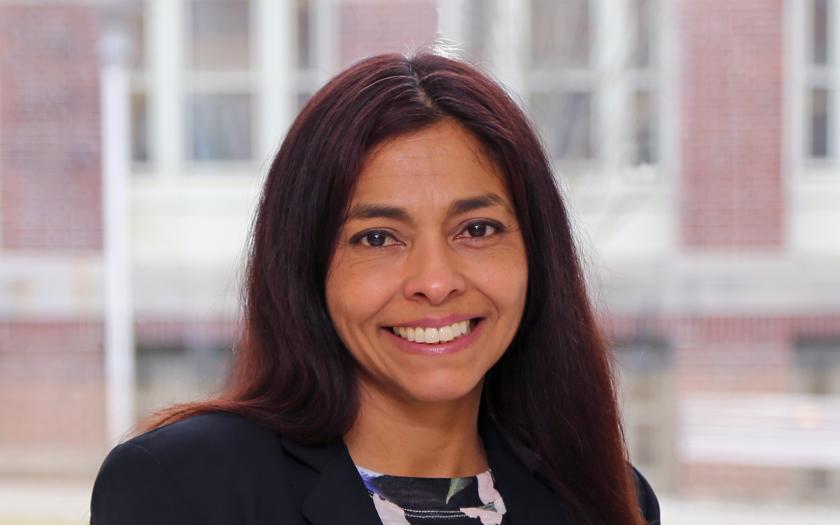September Faculty Spotlight - Michelle Dawson

Bio
Michelle Dawson joined the Brown faculty in July 2016. Before coming to Brown, Dr. Dawson was an Assistant Professor of Chemical and Biomolecular Engineering at Georgia Institute of Technology. Dr. Dawson has an undergraduate degree in Biomedical Engineering from Louisiana Tech University, doctoral degree in Chemical and Biomolecular Engineering from Johns Hopkins University, and postdoctoral training in Tumor Biology from Massachusetts General Hospital and Harvard Medical School.
Research
Dr. Dawson's research is focused on manipulating cell mechanics to control cell function. Quantitative microscopy techniques based on transport phenomena are used to characterize the mechanomic signatures of cells, which are important for cell migration, differentiation, and development in normal tissues and tumors. Genomic analysis and small molecule screening are then used to elucidate the molecular pathways controlling these mechanical profiles and to identify tissue biomarkers and targets for therapeutic development.
Information gained through these fundamental studies can be used to: (1) improve the homing of stem cells to tissues, (2) classify cells based on their mechanical properties, (3) increase our understanding of force-dependent cancer progression, and (4) optimize the physical properties of engineered tissues.
1) When did you know you wanted to be a biomedical engineer/researcher?
When I was an undergraduate, I thought I wanted to be a nurse, but at a public library, I came across the book The Transformed Cell by Stephen Rosenberg. It was a story filled with the trials and tribulations to generate one vial of interleukin-2. I was so amazed by his seemingly insurmountable goal, but the scope and the impact made it seem worth it to me. I look where he is now, but when he started people didn’t believe him. He believed it and persevered through giving up a lot of things to be a pioneer in immunotherapy.
2) Of all of the publications you have written, is there one that you are most proud of? Why?
My paper in the Journal of Cell Science was my first story in the cancer field, and the first time I really saw how my research could translate into something important. The manuscript took over 15 months to publish. It was held up in the review process with Cancer Research, and when we were close to satisfying reviewers another publication came out with results that identified the cell line we had chosen as an unfavorable model. It was eventually published and became a much better story through the review process, and the follow-up paper eventually got a lot of press. We were the first to show that an ovarian cancer cell line responded to a softer environment in the presence of lysophosphatidic acid (LPA). I see strength in my approach of adding one or two factors to a model at a time and checking in with the in vivo relevance periodically, not jumping right into the full complexity in vivo.
3) Did you ever do experiments that didn’t work?
As a graduate student, I worked with an encapsulation technique that was very sensitive to humidity… in Baltimore. It was intended to be a pulmonary delivery model, but the difficulties made me ask new questions and think about how the research could have more impact. I thought about drugs needing to reach the upper airways so I started to think a lot about mucus (laughs). I changed my focus to cystic fibrosis, started to get mucus samples from patients, and changed the direction of the lab.
4) How do you choose the projects your group works on?
I like my group to have some variation so that students aren’t working too closely, but I also encourage some overlap because the students need mutual support to learn difficult techniques like imaging and molecular biology.
5) What three qualities are most important for ensuring success as a young researcher?
Intellectual curiosity (desire to solve the problem, why didn’t it work?), persistence (they have to put in the time), leadership/community quality (being able to work with others within the lab and across the university)